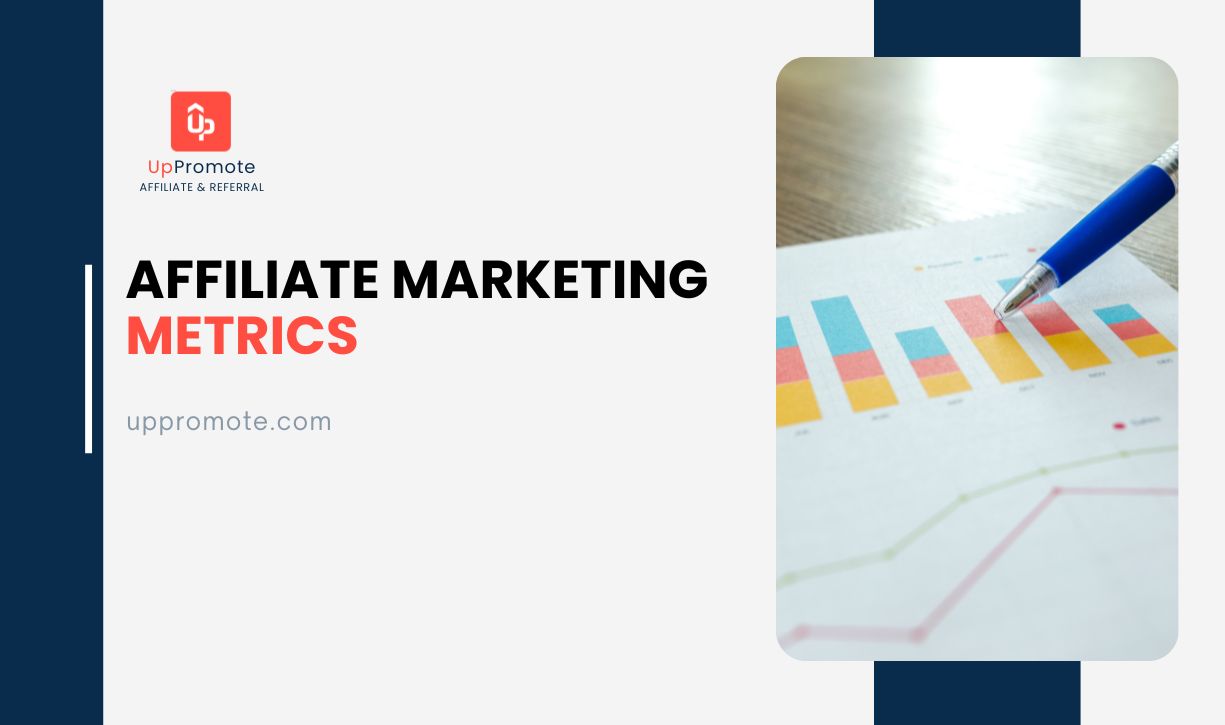⏰Last Updated on 12/24/24
You come to the affiliate world with clear expectations. You plan everything, from promotional platforms to affiliate commissions. But how do you know whether your strategy is generating a good result? Does it meet your goals? Is your affiliate’s performance effective?
To find answers to these questions, get to know realistic, measurable goals and evaluations. That’s where affiliate marketing metrics come into play.
This guide will show you a list of 23 metrics to clarify your affiliate campaign. Know them well before releasing your program.
Top 23 Key Affiliate Marketing Metrics That Everyone Needs to Know
We’ve tried to include the most significant measures that might relate to the brand’s affiliate plan. Some are popular, such as the click-through rate or conversion rate. Others, such as the churn rate or customer lifetime value, might not be as well-known.
Without chattering endlessly, let’s explore!
Total traffic referred
The first notable metric is the total traffic referred. It tracks the total number of visits generated by all referral links, banners, or other promotional materials.
Understanding and analyzing this metric is crucial for merchants. It provides insights into the overall impact of their program. It can also highlight the effectiveness of individual affiliates or promotional methods.
A higher traffic amount indicates that your team is reaching a broad audience. However, brands need careful evaluation if the traffic increases while other metrics (e.g., conversions or sales) are low.
Note: It’s essential to identify which channel drives the most traffic. It helps you understand the most potent partnerships and where to focus your efforts.
Clicks
This is another fundamental and widely tracked affiliate marketing metric. It counts the number of times audiences click on an affiliate link placed on the affiliate’s blog, email, or anywhere else.
So, this metric also shows the level of engagement generated by the affiliate’s promotions. Unlike traffic, however, clicks are counted regardless of whether users ultimately reach the advertiser’s website. In other words, it measures the initial interest in what affiliates are promoting.
A high number of clicks is a good indicator of reach. However, if it results in low sales, there might be issues with affiliate tracking or the alignment between products and audiences.
Click-through rate (CTR)
The CTR represents the rate of clicks on a referral link compared to the number of times audiences view the same link.
Here’s how to calculate it:
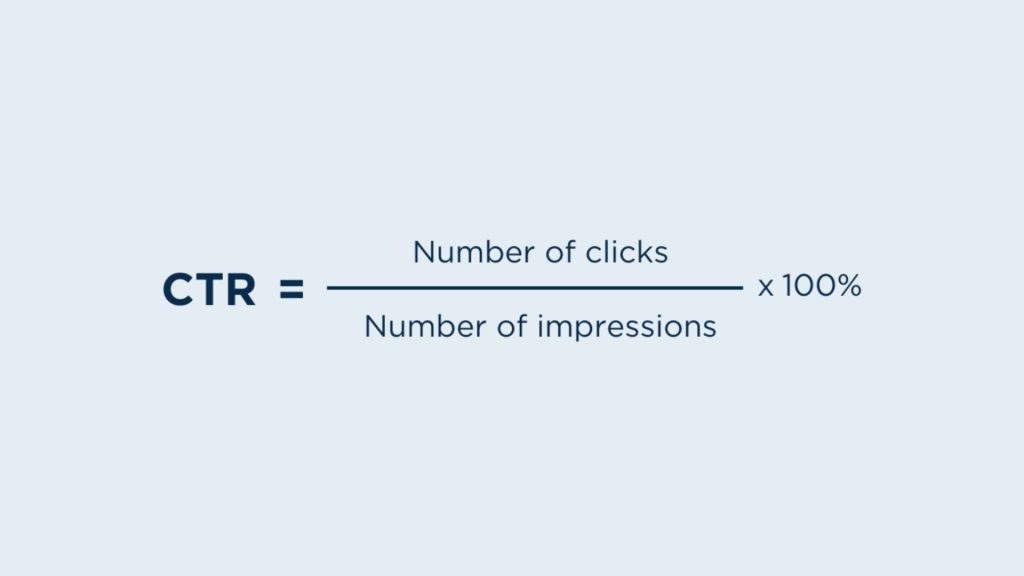
Example: If the affiliate link is displayed 10,000 times and receives 50 clicks, the CTR will be 0.5%.
By examining the CTR, you can tell how well the affiliate’s promotions resonate with the audience. A high CTR suggests that the promotional content is relevant and compelling to the audience.
Tracking CTRs also helps you identify what elements (i.e., image, placement) work best. Then, optimize your affiliate campaigns for better results.
Cost per click (CPC)
The CPC is one of the crucial metrics in affiliate marketing through advertisements, such as Google Ads or Facebook Ads.
It’s the amount that you’ll pay for each click generated through your ads.
Here’s the formula:
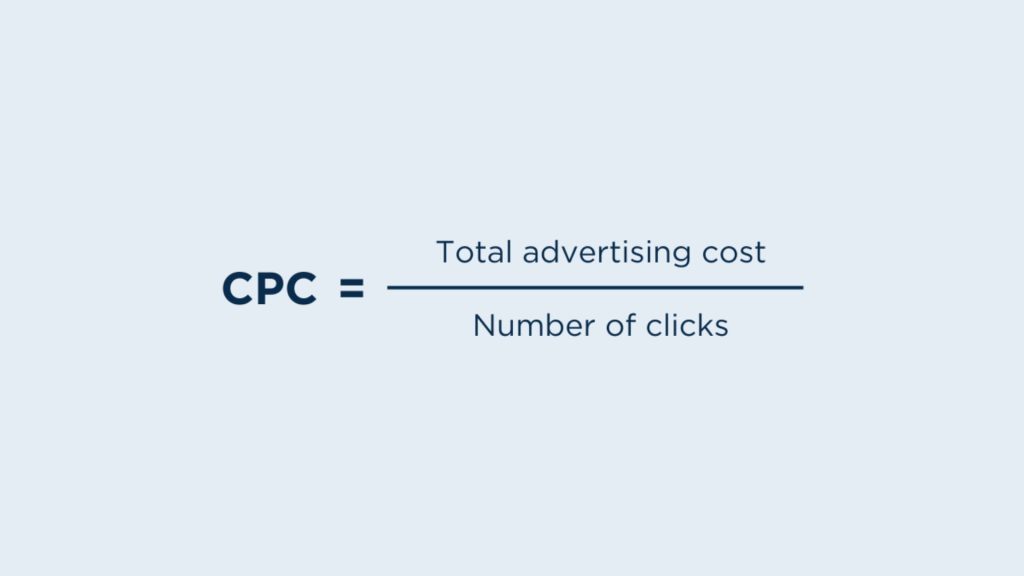
Let’s do some quick math. Suppose your Google ad campaign costs $200 and generates 20 clicks via the affiliate links. Your CPC would be $2 per click.
Calculating this metric is essential for managing your campaign budgets effectively. If it’s higher than desired, refine targeting and optimize your campaigns to reduce costs.
Note: Compare CPC across different affiliates and channels. The results show you which ones provide the most cost-effective traffic. Then, you’ll know how to allocate budgets wisely.
Cost per sale
The cost per sale (CPS) indicates how much you pay for each completed sale generated through the affiliate links.
The formula:
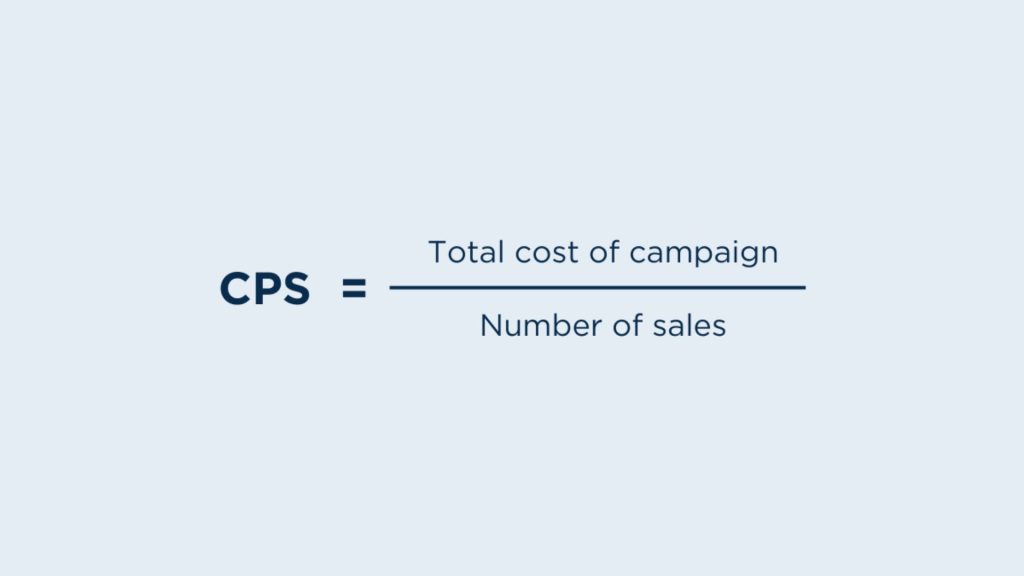
The CPS directly connects the cost of affiliate program to the actual sales generated. Thus, it helps you assess the efficiency and profitability of your affiliate program.
A lower CPS coupled with higher sales shows a more financially successful campaign.
From the insights, identify which campaigns deliver sales at a lower cost and allocate budgets more effectively.
Cost per lead
This pricing model shows the amount your affiliates will receive for each successful lead they generate. In other words, the CPL shows how much it costs to acquire a potential customer interested or engaged in your products or services.
This is how we calculate CPL:
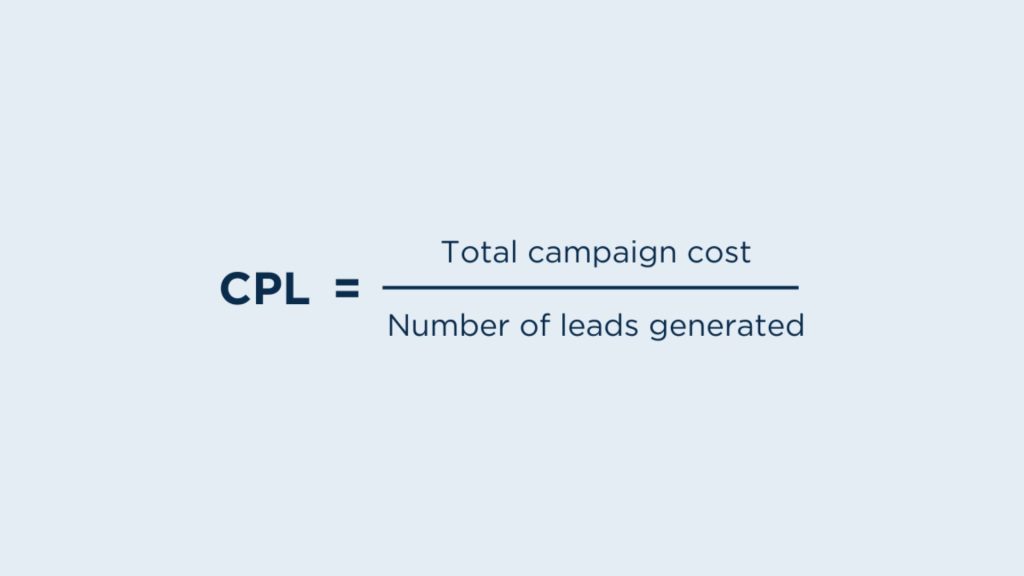
The leads could be email signups, form filling, trial subscriptions, etc.
Advertisers can use CPL to optimize their strategies. This may involve refining promotional materials, targeting specific audience segments, or identifying the most effective partnerships.
Conversion rate
This is one of the most impactful affiliate marketing metrics. You might spot some claims about high conversion rates as you land competitors’ affiliate programs.
So, what exactly is this metric about?
The conversion rate tells you the proportion of your audiences who complete a desired action after clicking on an affiliate link. You can set the qualified affiliate activity depending on your program goals. It often includes purchasing, signing up for a newsletter, subscribing to a trial, or downloading software.
It’s pretty simple to calculate the conversion rate:
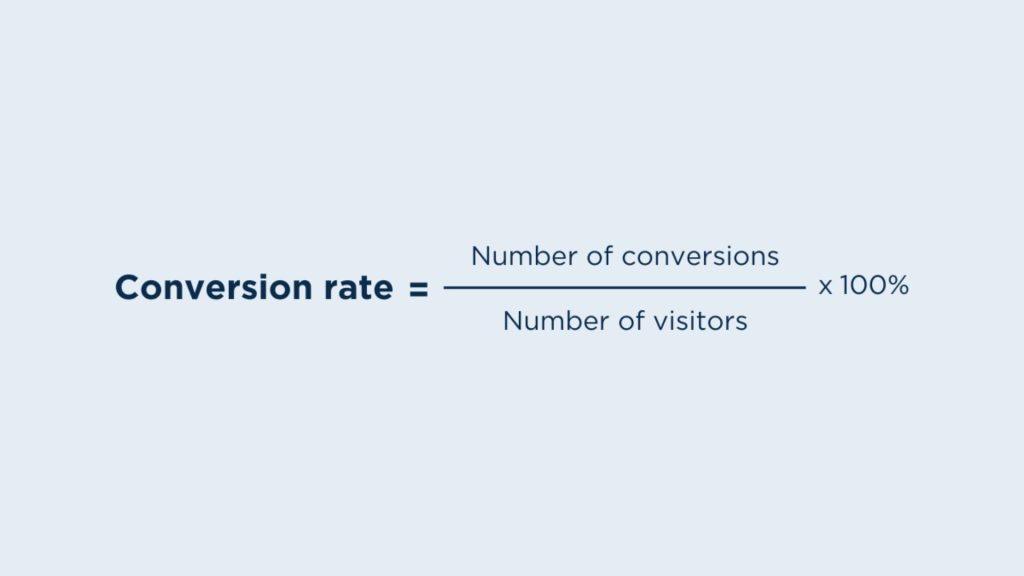
For example, 1,000 referred audiences visit your webinar platform, and 20 of them make a subscription. You’ll get a conversion rate of 2%.
This metric can tell how effective your marketing strategy and your products’ relevance. It can also indicate the quality of the traffic. Thus, understand which channels bring in the most qualified visitors and invest your resources accordingly.
Rate of return
A rate of return (ROR) is a fundamental financial metric that assesses the performance of a marketing campaign by measuring the gain or loss of its investment over a certain period.
Here’s the calculation of the ROR:
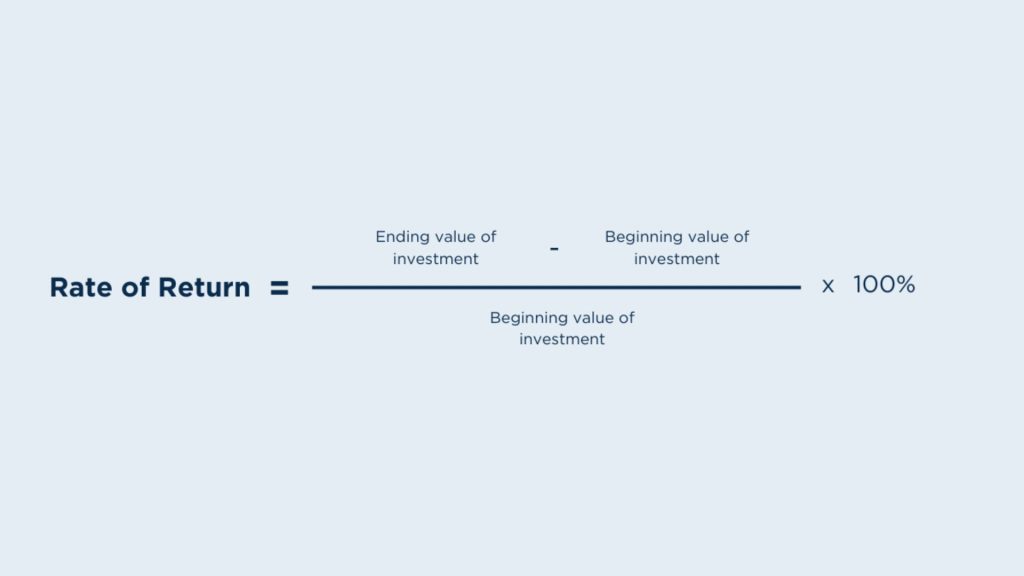
A positive ROR indicates a gain in investment. Adversely, a negative ROR shows that your program is costing you money.
Based on ROR, refine your strategy to maximize the returns within the limits of your budget. It prevents overspending on less cost-effective methods and helps you reallocate resources to channels or affiliates that contribute most significantly to the program.
Average order value (AOV)
The AOV indicates the average monetary value of each order placed through the affiliate links.
Advertisers can use AOV to assess how effectively their affiliate marketing campaigns generate revenue. A higher AOV indicates that your team is targeting the ideal audience.
Analyzing AOV also helps you know which products or offers resonate well with customers. It can guide you to improve your product offerings.
Retention rate
The customer retention rate measures the percentage of affiliate-referred customers who continue to engage with and make purchases from the advertiser. This metric is crucial for evaluating the ability of the affiliate marketing program to cultivate a loyal customer base.
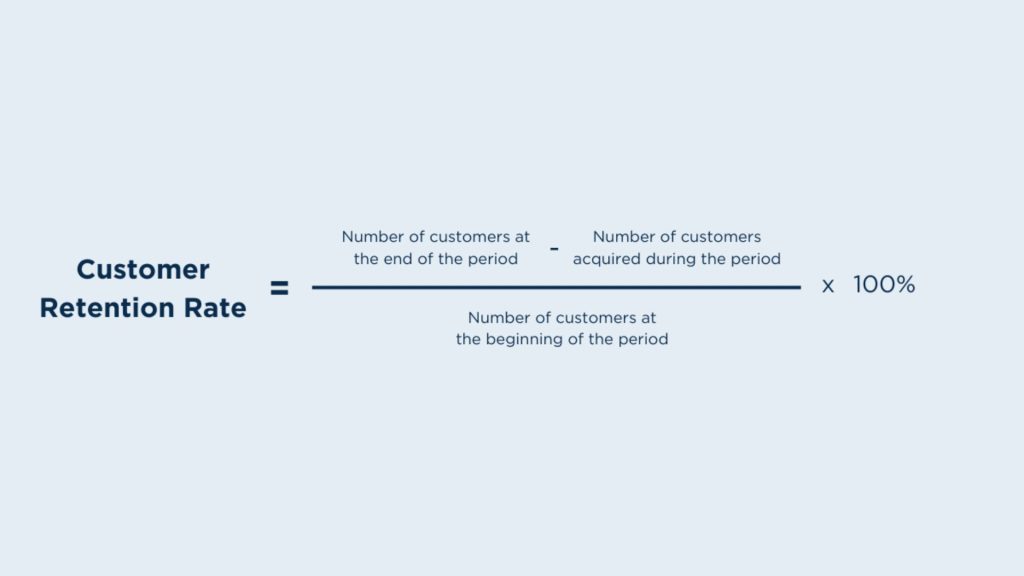
Is your campaign generating a high retention rate? Perfect! Your customers are satisfied with your offerings.
Churn rate
This metric for affiliate marketing provides information on the proportion of referred customers that discontinue making purchases within a period of time.
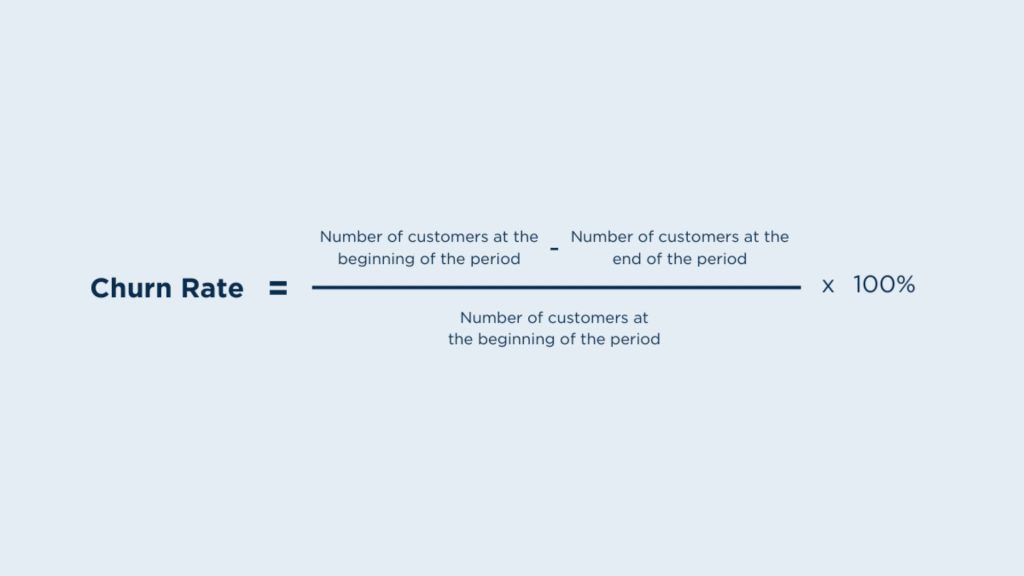
This mark is the opposite of the retention rate. A high retention rate typically corresponds to a low churn rate, and vice versa.
Since the churn rate focuses on those who leave, it can highlight potential issues or challenges. If you see a sudden increase in the churn rate, identify and address the causes. It might relate to your products, services, user experiences, etc.
Profit margin
Let’s explore a crucial financial metric that speaks to the effectiveness of your affiliate program in contributing to overall profitability.
The profit margin measures the percentage of revenue left after deducting all associated costs.
The formula is:
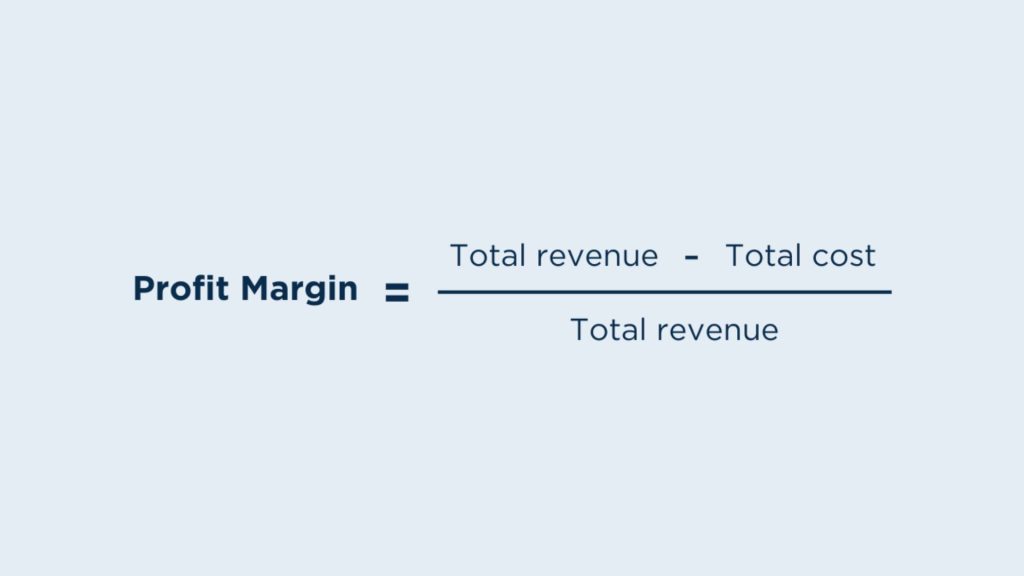
This ratio shows whether the affiliate channel investment leads to a satisfactory return. Advertisers can use it to allocate resources and adjust budgets for their marketing mix.
Revenue
Revenue is the total income generated from affiliate sales or conversions.
It’s crucial to track revenue to identify which affiliates, promotional channels, or campaigns significantly contribute to the success of the affiliate programs. From the reports, optimize revenue generation to ensure your program’s long-term sustainability and growth.
Revenue per affiliate
When you get the total revenue data, divide it by the number of affiliates. The result is revenue per affiliate.
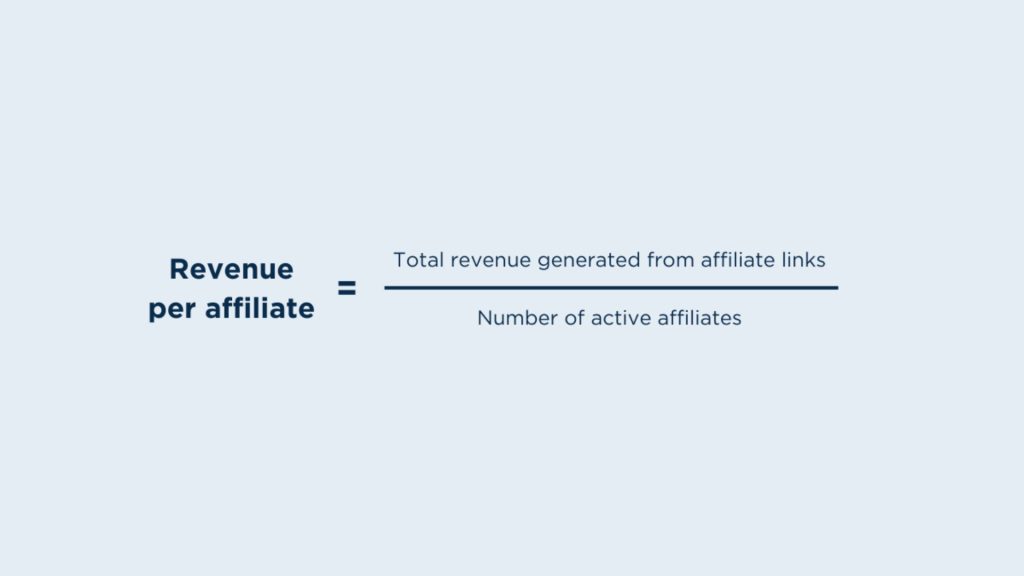
Along with other metrics (e.g., traffic, conversion rate), revenue per affiliate helps advertisers identify affiliates with growth potential. From there, they can develop strategies to support and amplify the success of these groups.
Besides, this ratio also provides insights into which aspects of the program may need adjustment or improvement.
Sales per affiliate
Look at the formula below to see how we calculate the sales per affiliate metric.
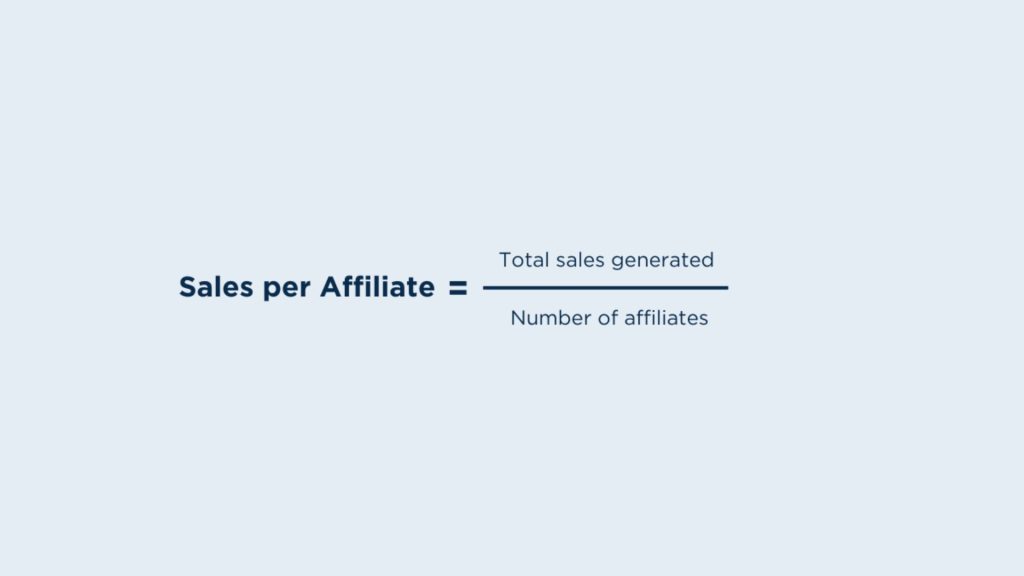
Advertisers often use this metric to evaluate the effectiveness of different partnerships and determine which affiliates consistently bring in the most customers. Then, focus your efforts and resources on those with the highest impact on sales.
Customer lifetime value
It’s the estimation of total revenue that you can expect from customers throughout their engagement with the company.
Here’s its formula:
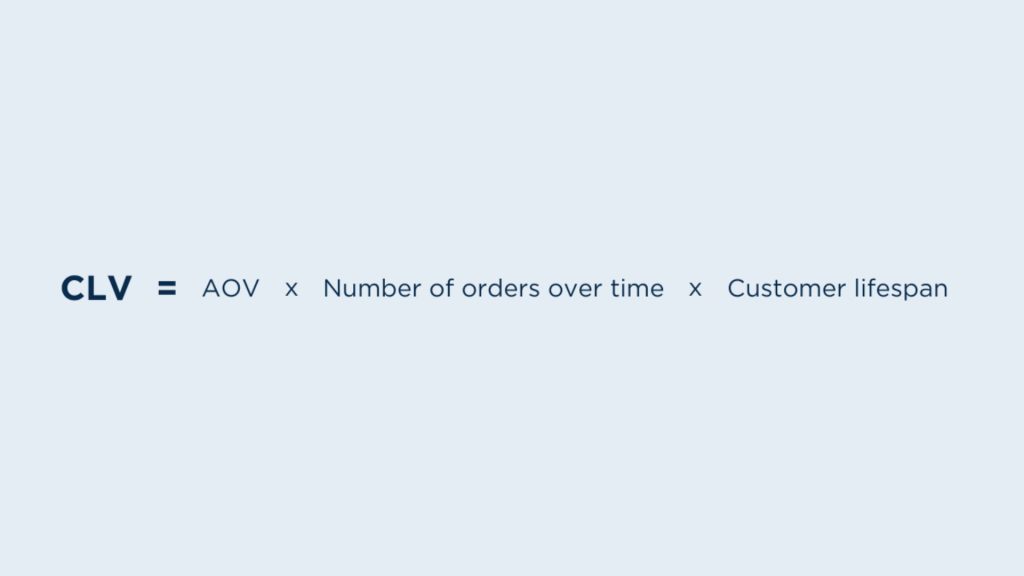
We’ve studied AOV. It’s the average amount of revenue generated from each customer order.
The number of orders over time (Purchase frequency) indicates how often a customer will likely make a purchase.
Customer lifespan is the estimated period a customer is expected to remain active and make purchases.
How can we use the CLV?
First, it lets us know which affiliate marketers contribute to the long-term value of customers. As a result, we can focus our resources and allocate budgets effectively.
Second, it helps segment customers. Advertisers will execute personalized approaches for different segments.
Top affiliate
Have you ever heard about the Pareto principle? We can apply this rule in the case of affiliate performance: 20% of your affiliates will generate around 80% of revenue or achieve any particular goal.
So, the top affiliates refer to those who consistently perform exceptionally well. They stand out and become critical contributors to the affiliate marketing success.
Deciding on top affiliates may vary depending on your goals and key performance indicators. It could be about driving traffic, conversions, or revenue growth.
For instance, the top affiliates of your program generate at least $10,000 a month. Or, they belong to the top 10% of affiliates whose conversions are highest.
After nailing them down, maintain close communication to ensure a long-term partnership. Offering special recognition or rewards is another great way to acknowledge their performance and retain them.
Besides, explore their insights and expertise to improve your program’s effectiveness.
Number of new affiliates
Sometimes, tracking the number of new affiliate partners who join your program within a specific period is essential. This metric will tell you the expansion level of your affiliate program. It helps evaluate the effectiveness of your recruitment strategies and promotional campaigns to attract new partners.
An increasing number of affiliates shows your program’s attractiveness and growth potential. It can contribute to diversifying your affiliate base. You can expect different audience demographics, promotional channels, and strategies.
Conversely, low signups indicate the need for promotion and recruitment improvement.
However, note that a surge in quantity also requires additional efforts in onboarding, training, resources, and managing the whole team. This ensures the new partners understand the program and generate a smooth promotion.
Note: While tracking quantity is essential, focusing on quality is still vital. Prioritize partnerships with reliable and potential partners who can make your program thrive.
Percentage of active affiliates
This affiliate marketing metric measures the proportion of actively engaged affiliates promoting the products or services.
A high percentage of active affiliates is generally a positive sign. It shows that your program is effective in keeping partners engaged and motivated. It might result from quality products, competitive commissions, good affiliate support, and more.
If you spot a low percentage of active affiliates, identify potential reasons for improvement. For instance, consider offering extra incentives or providing more compelling resources.
New vs. recurring customer ratio
Use this ratio when you want to know the proportion of first-time buyers compared to returning customers. It helps advertisers examine their program’s effectiveness in building a loyal customer base.
A high ratio indicates that there might be issues retaining your customers. To improve this ratio, enhance the customer experience and satisfaction with your products and services.
Number of new customers
Sometimes, it’s essential to track how many individuals become your customers for the first time through affiliate marketing efforts. It tells whether your affiliate team attracts and converts its target audiences.
An increase in this number is a good sign. It may signify that the affiliate program is reaching new audiences or markets, expanding the customer base.
From the information, you can refine your approach by focusing on potential sources of customers. For instance, you expand your reach to affiliates with a solid social media presence. Then, you see a surge in the number of new customers. Now, you know how to reallocate your budget and promotional efforts.
Note: This metric reveals the effectiveness of your affiliates. However, it’s better to evaluate it along with other aspects, such as the quality and long-term value of the new customers, for a more precise evaluation.
Percentage of return
Also known as the rate of cancellation, this metric shows the percentage of referred customers who cancel or refund their purchases. Monitoring the percentage of return helps advertisers understand the quality of conversions.
A high return rate might indicate issues with the customer experience. It could be about product satisfaction or delivery. For instance, the affiliates sometimes exaggerate the product’s benefits to increase affiliate sales. This action might lead to customer dissatisfaction and a higher return rate.
Advertisers can use this information to refine their product offerings and choose to partner with affiliates who drive more sustainable and satisfied customers.
Return on Investment (ROI)
Let’s wrap up this list of affiliate marketing metrics with ROI, an indicator of your program’s profitability and success over a specific period. In other words, it tells how much you gain compared to the costs of running your program.
The formula of ROI is:
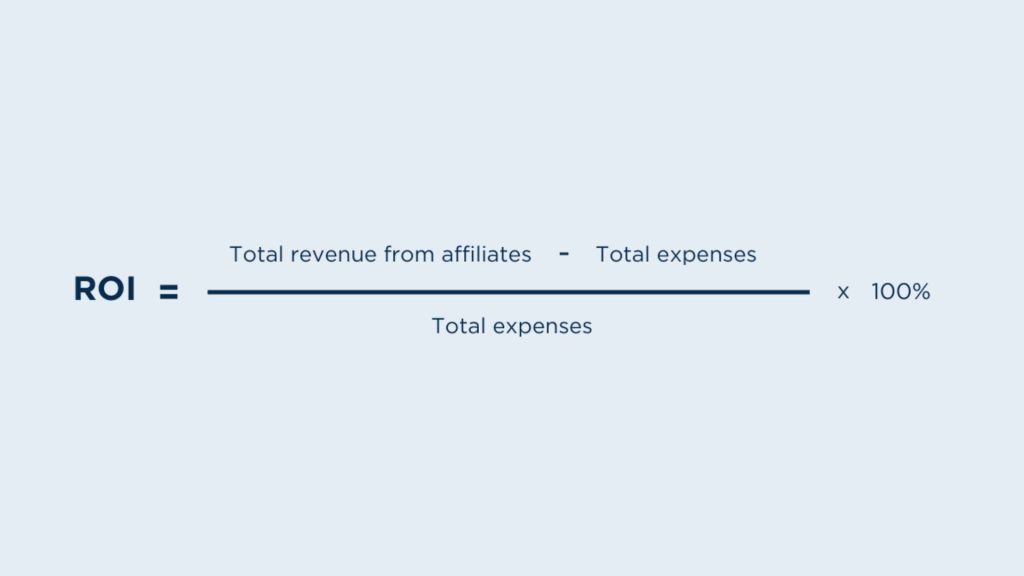
The total expenses include all associated costs. It covers affiliate commissions, affiliate networks, customer acquisition costs, hiring an affiliate manager, etc.
Let’s review this example:
Your affiliate program generates a total revenue of $1,000 this month. The cost spent includes affiliate commissions ($100), platform fees ($80), and promotional materials ($20). Then, your ROI is: ($1000-$200)/$200*100% = 400%.
ROI provides a precise measure of the overall campaign’s financial performance. It answers whether the program is generating more affiliate revenue than it costs. It’s essential to monitor ROI over time. This helps identify areas for adjustments and prioritize efforts that contribute to a positive ROI.
What Do Affiliate Marketing Metrics Mean?
Advertisers often use quantitative measurements to assess the performance and effectiveness of their affiliate programs. Affiliate marketing metrics are among those measurements.
From conversions to average order value, they provide valuable insights into various aspects of the affiliate campaigns. Thanks to them, you can make data-driven decisions and optimize your strategies.
There’s a wide range of affiliate marketing metrics. We’ve just walked you through the most popular ones. Tracking and analyzing crucial metrics based on your specific goals and program structure is essential. It helps you understand the overall performance and refine your campaigns appropriately.
Why These Affiliate Marketing Metrics are Important?
When you use affiliate marketing metrics, your campaign may reach new heights. Why? Let’s figure it out!
Understanding program performance
Metrics helps brands know how well their affiliate program drives traffic, engages audiences, and converts leads into customers. Those measures, such as total traffic referred, clicks, and conversion rates, give us the most precise performance insights.
Measuring profitability
Affiliate marketing metrics like ROI and CPA provide a picture of your program’s financial health. They reveal how much you’re earning compared to your investment. Focusing on these profitability metrics ensures your program remains valuable for your business.
Identifying strengths and weaknesses
Tracking metrics are perfect for revealing shining aspects of your program and potential weaknesses. For instance, they show what affiliate marketing channels generate the highest ROI. From the results, you can invest in the strong points and find solutions to improve the weak ones.
Building profitable partnerships
Analyzing metrics is an effective way to evaluate the performance of your affiliates. You can identify top performers who deliver positive results and strengthen your connections with them.
Data-driven decision-making for optimization
No more relying on your feelings or baseless advice when you’ve got metrics in your hands. The measures empower you to make informed decisions about partnership optimization, promotional channels, resource allocation, etc. Ultimately, the quantitative approach allows you to improve your efforts and boost profitability constantly.
How to Measure These Metrics Effectively?
It makes no sense if you know your program’s crucial metrics yet mismeasure them. Worry not! We’ve prepared tried-and-true tips to get you out of this unexpected situation. Let’s uncover them!
Having clear goals
Before diving into the affiliate marketing KPIs or metrics, define your objectives. Are you aiming to broaden your customer base, generate leads, or boost sales?
When you have well-defined goals, you can take a better approach to measurement. For instance, if your goal is to increase sales, focus on metrics like conversion rates, average order value, or sales per affiliate.
Having clear goals also builds effective communication with your affiliate team. The predefined metrics will guide everyone toward the same objectives, increasing the chance of success.
Conversely, you can drown in a sea of data without clear goals. Finding which metrics genuinely matter is much more challenging. It might mislead your strategies.
Regularly tracking and analyzing data
It’s essential to track and analyze the collected data regularly. Whether monitoring affiliate traffic or evaluating conversion rates, it helps you stay informed about the performance of your affiliate program. This action also ensures that your later decisions are based on the most up-to-date information.
Besides, note that the marketing industry is dynamic. Changes in market conditions, consumer behaviors, or emerging trends require businesses to monitor the data more regularly. Once you’ve recognized any unusual signs, such as a sudden surge in website traffic or strong fluctuations in conversion rates, you can adjust your strategies to remain responsive.
Using tools
If you want to nail the data tracking and analysis process, select and use the right tools. Here are some essential tools to help accurately measure your chosen key metrics:
Google Analytics
This free tool combines significant features that help businesses track how good their affiliate marketing efforts are. The essential functions include:
– Traffic analysis: Understand website traffic sources, including affiliate referrals.
– Conversion tracking: Monitor the effectiveness of conversions driven through affiliate efforts.
– User behavior: Know how your users interact with the website
Affiliate Management Software
If you’re heading to a well-organized affiliate program, Uppromote affiliate management software is a brilliant choice.

We help the management of your affiliate program become more effective and time-consuming. In particular, we help:
– Monitor affiliate activities, affiliate link clicks, and conversions
– Automate commission calculations and payouts
– Generate comprehensive reports on affiliate performance
With the support of affiliate management software, you can make data-driven decisions to achieve sustainable success.
Customer Relationship Management (CRM)
This tool helps manage interactions with your customers and affiliates. It aims to build and maintain customer loyalty and long-term affiliate partnerships.
For instance, CRM analyzes communications with your customers. Then, it aligns the collected data with your affiliate marketing strategies for enhanced targeting.
Marketing Automation Tools
These smart tools help you automate repetitive marketing tasks, from email campaigns to lead nurturing and data analysis. For instance, regarding email marketing, it automates follow-ups and tracks engagement metrics.
Segmenting your metrics based on different criteria
Having a lot of metrics to follow is a big challenge for advertisers. Segmentation is a powerful solution to lessen your burden.
This method helps brands analyze and understand their campaigns much better. Ultimately, they can tailor strategies and optimize resources for better results.
There are different options for segmentation. Your choice depends on your goals and program features. Here are some common types to consider:
Affiliates: You can identify high-performers and areas for improvement. Segmenting affiliates based on their niches and geography is another option.
Channels: Clarify metrics in different channels, such as search engines, social media, and email marketing. You can also dive deeper into each channel. For instance, paid search vs. organic reach or Facebook vs. Instagram traffic.
Customer behavior: Thoroughly understand user behavior by segmenting metrics based on new vs. returning customers. Besides, pay attention to other criteria, such as their order value and demographics.
Identifing the latest industry trends
This approach goes beyond conventional tracking. It provides brands with up-to-date insights that can significantly impact the affiliate markeing success. Let’s dig a little deeper!

Identifying industry trends helps enhance metric relevance. For instance, with a constant rise in mobile usage, focusing on metrics related to mobile performance is essential.
Knowing what’s trending helps advertisers prioritize metrics that align with current dynamics. This approach leads to a more precise evaluation of performance and optimization planning.
Understanding changes in customers increases the effectiveness of metrics tracking. Those trends, such as the shift towards short video content, impact how users engage with your promotions. Adapting to these shifts helps brands optimize metrics like click-through rates or conversion rates. This insight ensures better measurement and optimization.
Evaluating cost-effectiveness
Sometimes, a high number of clicks and conversions might create the illusion of success. However, brands need to consider most related elements to avoid overestimating the profitability of their affiliate program.
Thus, it’s always crucial to incorporate cost-related elements into the evaluation. Those metrics include, but are not limited to, ROI, CLTV, CPC, and CPS.
Evaluating cost-effectiveness will guide you to informed decisions. For instance:
– Establish a stronger connection with content creators who deliver the highest ROI and lowest costs.
– Allocate resources to more cost-effective channels. For instance, if email marketing has a higher ROI than social media for your program, prioritize your focus accordingly.
– Analyze overall campaign performance and optimize your creative strategies for better results.
Conclusion
In short, knowing how to set measurable goals and evaluate them is vital to standing out in the affiliate industry.
Choose the most reasonable ones from this list of affiliate marketing metrics that help you thoroughly understand your campaign. After selecting, revise the guide provided to use the metrics effectively.
By leveraging data-driven insights, you can refine your affiliate marketing strategy, build a stronger relationship with affiliates, and ultimately enhance the overall success of your campaign.


